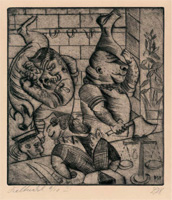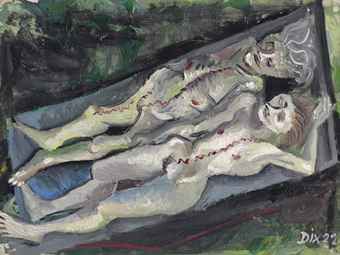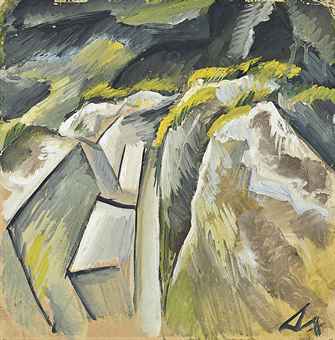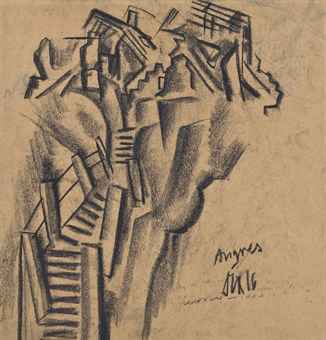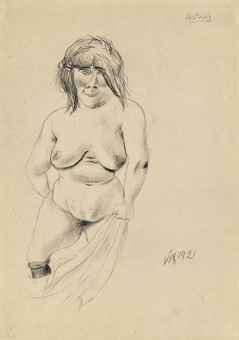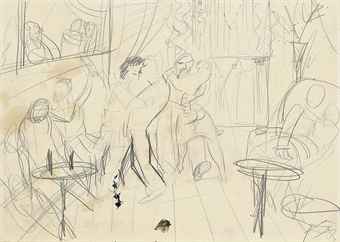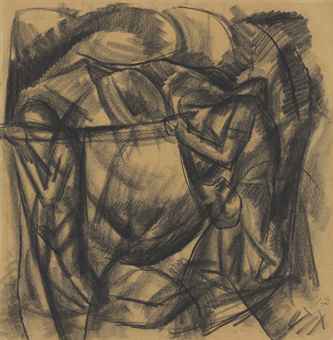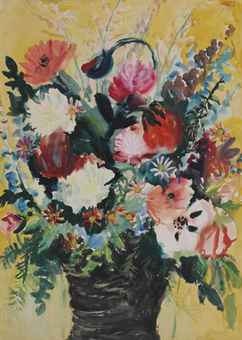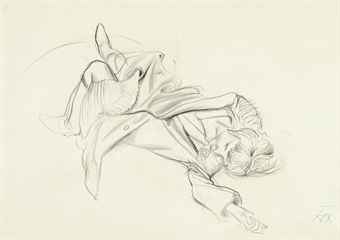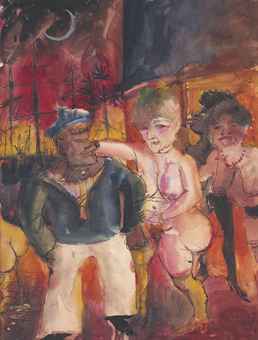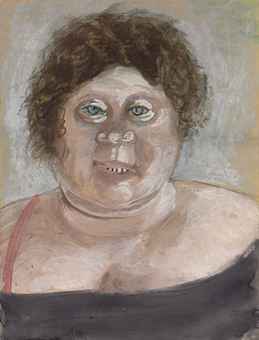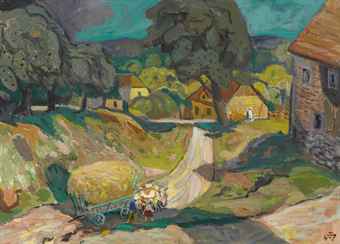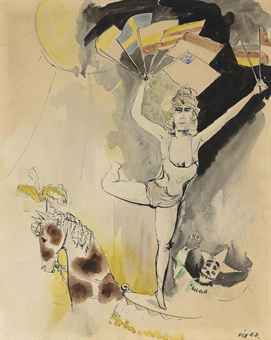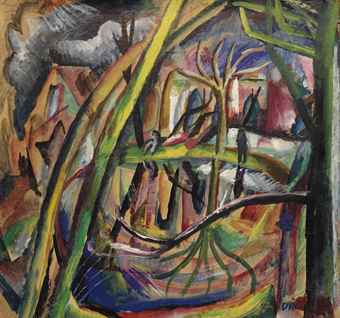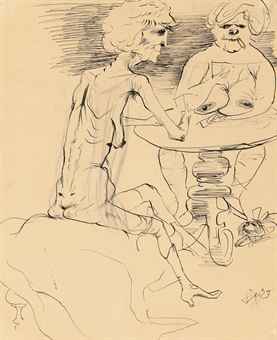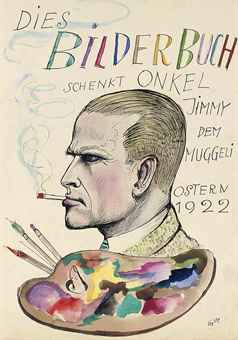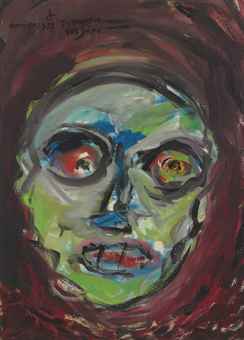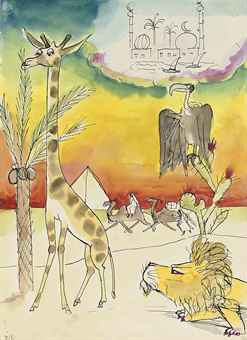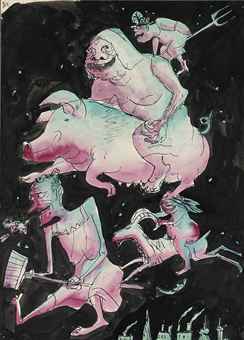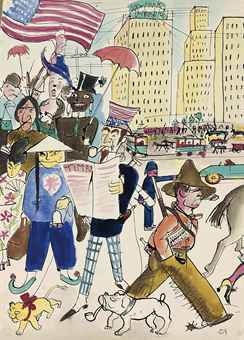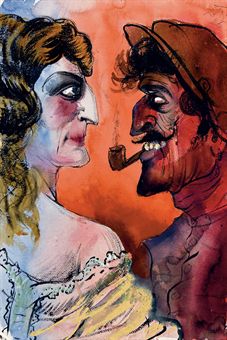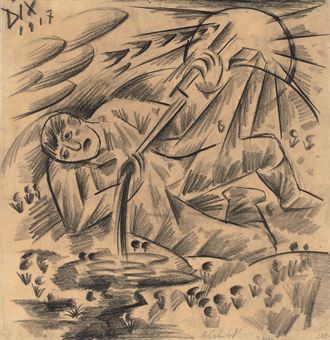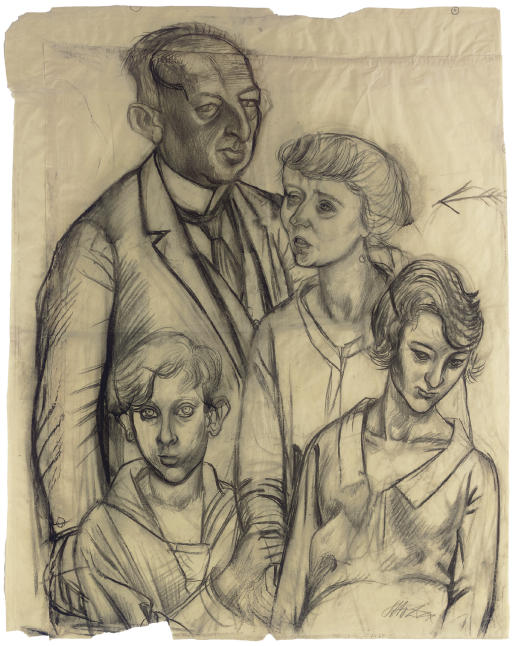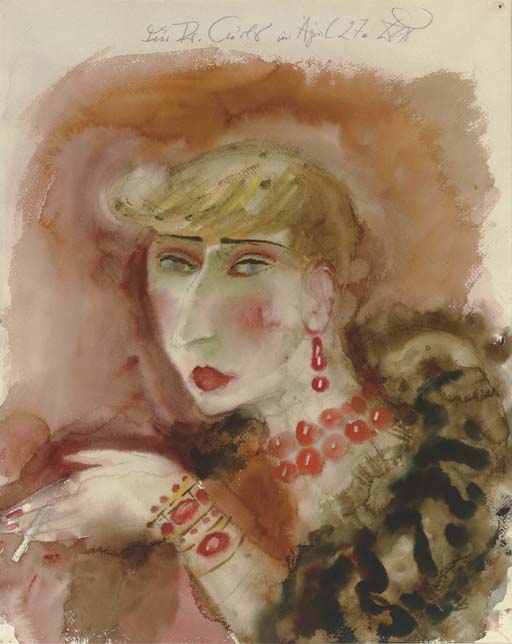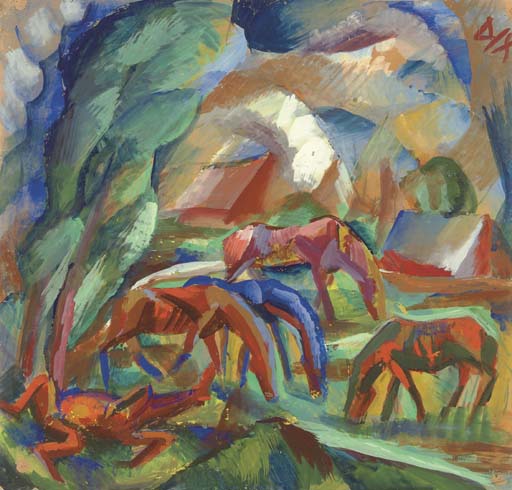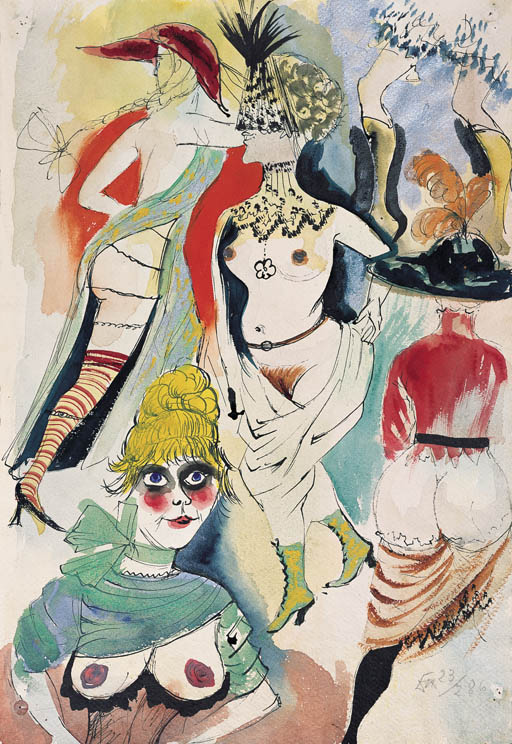|
Biography
Otto Dix was born on December 2, 1891, in a working-class family
in Untermhaus, a village near Gera, Thuringia. He was the oldest child
of Franz Dix, who worked as a molder in a foundry, and his wife Louise,
née Amann. From 1905 to 1908 he received training as a decorative
painter in Gera. In the fall of 1909 Dix moved to Dresden, where he
enrolled
in the School of Applied Arts in January 1910. At school Dix
concentrated on decorative work, learning to draw ornamental designs and
flowers characteristic of the art nouveau aesthetic that dominated at
the time. Since Dix received no formal training in easel painting at the
practically oriented arts and crafts school, he studied the old masters
in the Dresden state collections.
In 1911, at the age of twenty, Dix encountered the ideas of Friedrich Nietzsche, which would influence his art significantly. Nietzsche urged no less than the collapse of the bourgeois moral code, promoting instead a Dionysian affirmation of life and an exaltation of both joy and pain. Nietzsche advocated the cultivation of intense bodily experiences in order to achieve a nontranscendent self- realization, the most powerful of which, according to the philosopher, were music, singing, dancing, sex, birth, hatred, fighting, and war. Dix's enthusiasm for Nietzsche's ideas inspired his only known sculpture, a life-size plaster bust of the thinker. Acquired by Paul Ferdinand Schmidt for the Dresden City Art Collection in 1923, the bust was Dix's first work to be sold and remained in the collection until confiscated by the Nazis in 1937. Like many of his contemporaries who were intoxicated with Nietzschean ideals, Dix responded to the outbreak of war with excitement, believing that it would purge the country of its staid, Wilhelminian bourgeois plutocracy, and Germany would emerge a stronger, more vital nation. He enrolled voluntarily in 1914 and was assigned to a field artillery regiment in Dresden. Early in 1915 he was moved to the nearby town of Bautzen to train as a heavy machine gunner. In the autumn of 1915 Dix was sent to the Western Front in northern France where he took part in the autumn campaign in Champagne, followed by several battles in the Somme in 1916. In late 1917 Dix was in Russia on the Eastern Front, and by February 1918 he had returned to France for several major battles. When the war ended, Dix was in Silesia training to be a pilot. He was wounded several times, once almost fatally. Dix achieved the rank of vice-sergeant-major and was awarded the Iron Cross (second class), the Friedrich-August medal, and the Saxon Service medal with swords. Significantly, Dix continued to draw and paint in the trenches. Dix returned to Dresden in 1919 and enrolled at the Dresden Art Academy, thus fulfilling his ambition to be a painter. He was a master pupil with Max Feldbauer and Otto Gussmann. In 1920 Dix met George Grosz, who, along with John Heartfield, invited him to participate in the First International Dada Fair. Dix's contributions to the show were Kriegskrüppel (45% erwerbsfähig!) (War Cripples [45% Fit for Service]) and Der Fleischerladen (Butcher's Shop), gruesome evocations of postwar psychology on the themes of inhumanity, violence, and destitution. Dada sharpened Dix's developing brand of realism, in that it ridiculed falsity and indulged in the low, the caricatural, and the representation of human baseness. Dix's unflinching depictions during the Dada period often combined oil painting and collage, blending the privileged medium of fine-art painting with base everyday materials in a gritty social commentary. After his involvement with Dada, Dix enjoyed a successful career as a painter, teaching at the Dresden Art Academy from 1927 until 1933, when he was dismissed by the Nazis. He retreated to a country estate near Lake Constance and focused on landscape painting. Otto Dix died on July 25, 1969, in Singen, Germany. |
||
Christie's 2015
Est.. £100,000 -
£150,000
($151,300 -$226,950)
Otto Dix (1891-1969)
Skizze zur Kriegsradierung "Matrosen in Antwerpen"
Pr.£12,500($19,138)
Christie's 2013
($151,300 -$226,950)
Otto Dix (1891-1969)
Skizze zur Kriegsradierung "Matrosen in Antwerpen"
Pr.£12,500($19,138)
Christie's 2013
Christie's 2012
Christie's 2011
Christie's 2010
Christie's 2007
Pr.$2,505,000
Christie's 2006
Otto Dix (1891-1969)
Fetischisten gewidmet
Pr.£142,400($262,443)
More Christie's 2011
·

